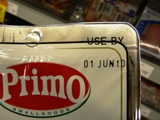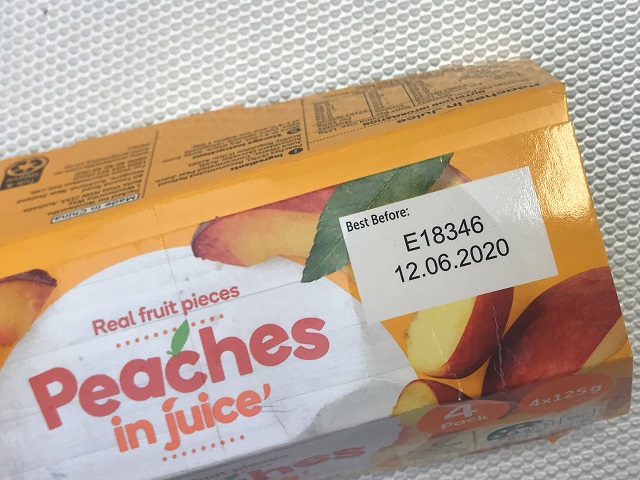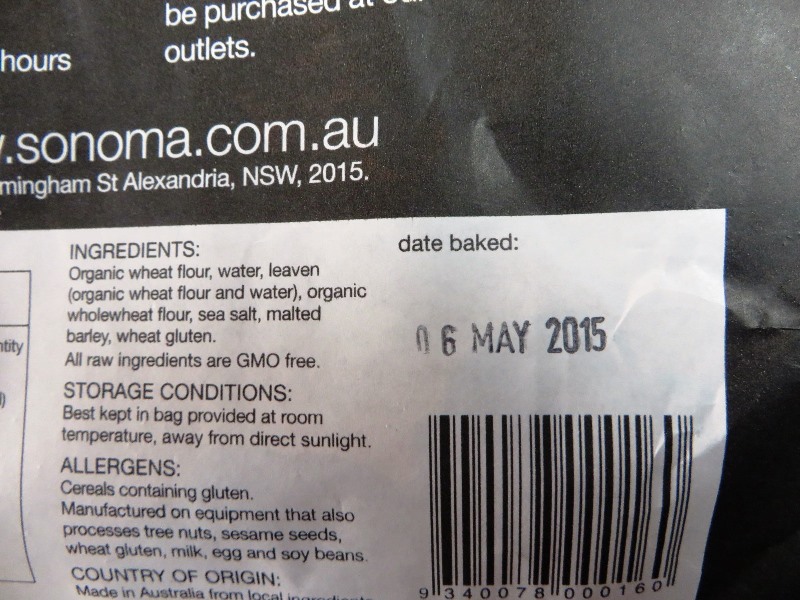- Home
- Blog
- Additives and Labels
- Q. What's the difference between a Use-by and a Best-before date?
Q. What's the difference between a Use-by and a Best-before date?
Written by Catherine Saxelby
on Thursday, 07 March 2013.
Tagged: additives, Best Before Date, food labels, food safety, FSANZ, guides, kitchen organisation, technology, tips, Use-By Date

A. Do you look at the date before you buy? I know I do! There are three types of date marking - a Use-by date, a Best-before date as well as a Baked-on date and it's worthwhile knowing the differences. Read on ...
1. Use-by date
The Use-by date gives you an idea of how long you can safely consume food. It should be eaten or thrown away by the Use-by date as after that date the food is not safe to eat, even though you may not see any signs of spoilage like mould or an off-smell.
Do NOT consume the product once past its Use-by date.
For health and safety reasons, it is illegal to sell food once past its use-by date.
Use-by dates are generally found on perishables and short-shelf life foods such as:
- fresh meat packed at the supermarket
- packet ham, packet bacon and other deli meats
- milk
- yoghurt
- custard
- fresh dairy products such as cream and sour cream
- ready-to-heat products like chilled pasta sauce, pre-cut vegetables or garlic bread.
REMEMBER:
IF IN DOUBT,
THROW IT OUT!
Examples of Use-by dates:
 |
Use-by date on fresh milk in a supermarket 7-8 day shelf life
|
 |
Use-by date on chilled French onion dip in a supermarket deli cabinet 14 day shelf life
|
 |
Use-by date on packet of shaved ham from a supermarket deli cabinet 30+ day shelf life
|
2. Best-before date
A product will remain fresh and of good quality right up to its Best-before date (and often beyond) if it is properly stored, both at the supermarket and once home.
The food is not spoiled immediately after the date and can still be sold if in good condition.

However its quality has begun to decline.
A Best-before date is used on foods like:
- cereals
- muesli bars, nut bars
- biscuits
- snack foods
- flour
- eggs
- canned foods (like the canned peaches in the photo)
- frozen foods.
The photo above shows a product stamped with a Best-before date. This date marking is typical of packaged foods. It has a 24-month shelf life.
Below is a jar of malt syrup with a 12 months Best-before date along with a Batch number that allows the manufacturer or distributer to identify when it was made.
If you're unsure of whether to eat it past the Best-before date, use the look-and-sniff test.
If the food looks and smells as you would expect, it should be safe to eat.
3. Baked-on date
A Baked-on date is usually found on bread, muffins and cakes with a shelf life of less than 7 days, so you can tell how fresh they are.
See the shot of a label of crusty bread below showing you the date it was baked on .
This type of date marking can also be a Baked-for date.
Save
Foodwatch
The Good Stuff
The Boring Stuff
© 2025 Foodwatch Australia. All rights reserved
Website by Joomstore eCommerce











